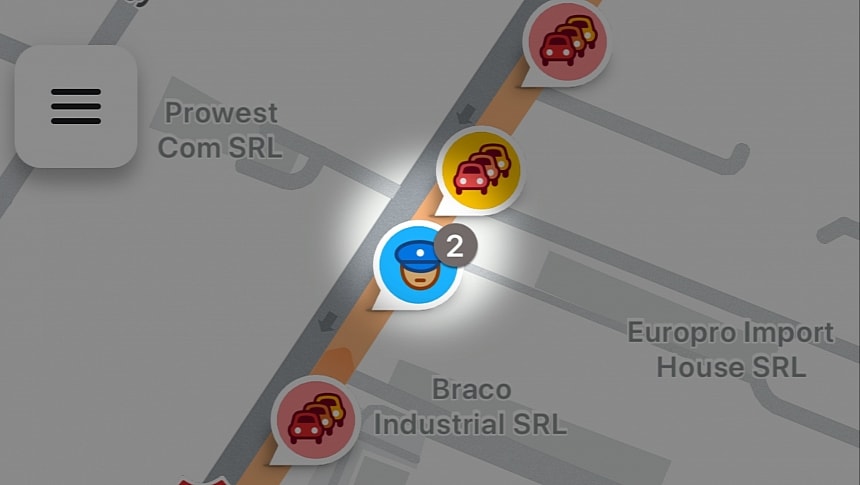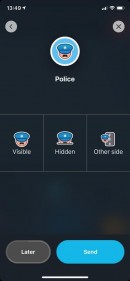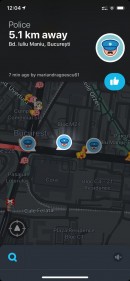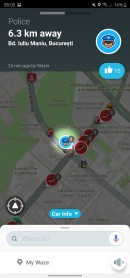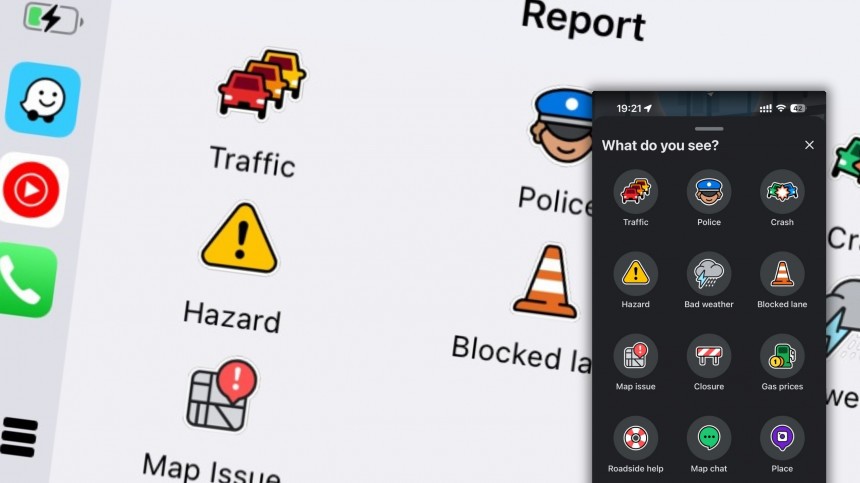Let's be honest about it: many people use Waze specifically for police reports, as they want to reduce the likelihood of getting a ticket for speeding.
The support for police reports has long been a controversial feature, and I won't start a debate again, especially because opinions are and will always be divided. However, it's important to know where police stand in this debate.
With speed trap reports, Waze allows users to alert other motorists about the radars they encounter on the road. The warnings generated by Waze enable drivers to slow down before they meet the speed traps.
I don't like to admit it, but I've seen many people misuse this feature. They drive over the limit and slow down when they see a Waze report, accelerating hard once they get past the police car.
Police forces across the world have so far expressed different opinions on this feature. Some believe it helps them serve their purpose better because they make people slow down, while others see the police reports as a tool to escape unpunished and encourage reckless behavior.
The West Vincent Township Police Department tries to see the glass half-full.
In a post on Facebook, the police department reveals that officers on the road also use Waze. While you'd normally expect an officer to spam the "not there" button (which helps invalidate a speed trap report in Waze, eventually removing it from the map), this isn't the case in West Vincent Township.
The police department tells drivers to "tag us" because "we don't mind." Police cars are on the road specifically to make drivers slow down, at least for the duration of the enforcement, and a police report in Waze only makes it more effective.
The police department says drivers slowing down and paying attention is "all we would really like to see anyway," so it doesn't matter if this goal is achieved with a speed trap on the side of the road or a report in Waze.
While police encourage users to pin them on the map, officers can report themselves, too, eventually using the Waze user base to confirm the speed trap. The more users validate the report, the more effective the speed trap, so more drivers eventually slow down when they get the notification in the app.
Waze has become the number one choice for users who want to receive traffic information while driving, but it's not the only solution offering such capabilities.
Google Maps and Apple Maps also offer support for sending traffic reports, with alternative solutions like Sygic, TomTom, and HERE also adopting similar tools to make the road more predictable.
However, all these apps adopted a simplified report, compared to Waze, which supports a wide range of traffic reports. They typically support only speed traps, accidents, and generic hazards, whereas Waze includes a long list of reports, like blocked lanes, potholes, roadkill, and traffic jams.
Competing against Waze has become a priority for Apple, albeit the company's strategy isn't working as planned due to the slow rollout worldwide. Apple has tied the incident reporting capabilities to the detailed city experience, a major update that includes first-party maps, improved navigation, and Look Around. However, the detailed city experience rolls out gradually to users worldwide, and the update is only live in limited countries, with the broad availability phase still not on the radar.
As a result, the incident reporting support is also experiencing lackluster adoption, as Apple Maps doesn't have enough users to send traffic reports and validate submissions.
Critics have long proposed a strategy that they claim would lead to creating an almighty navigation app that includes everything, such as flawless directions and incident reporting. Merging Google Maps with Waze isn't part of Google's long-term strategy, as the search giant wants to let the two navigation apps operate independently.
Google Maps and Waze already have different purposes despite looking similar. Google Maps has evolved to become an all-in-one mapping platform focused on more than just navigation, including business reviews and world exploration. Waze has retained its original focus, offering turn-by-turn navigation and crowdsourced traffic data. Waze also donates certain information to Google Maps, but except for this limited collaboration, the two apps will remain separate Google assets.
Waze allows users to send three types of police reports. The most common is the standard police report, but users can also flag hidden police and a speed trap on the other side of the road. The parent company considered simplifying the feature by removing redundant options, eventually giving up on this idea specifically to let the police reports serve their purpose as straightforwardly as possible. All these police reports are available cross-platform, so you can use them on mobile devices and in the car when running Android Auto and CarPlay on the infotainment screens.
With speed trap reports, Waze allows users to alert other motorists about the radars they encounter on the road. The warnings generated by Waze enable drivers to slow down before they meet the speed traps.
I don't like to admit it, but I've seen many people misuse this feature. They drive over the limit and slow down when they see a Waze report, accelerating hard once they get past the police car.
Police forces across the world have so far expressed different opinions on this feature. Some believe it helps them serve their purpose better because they make people slow down, while others see the police reports as a tool to escape unpunished and encourage reckless behavior.
The West Vincent Township Police Department tries to see the glass half-full.
The police department tells drivers to "tag us" because "we don't mind." Police cars are on the road specifically to make drivers slow down, at least for the duration of the enforcement, and a police report in Waze only makes it more effective.
The police department says drivers slowing down and paying attention is "all we would really like to see anyway," so it doesn't matter if this goal is achieved with a speed trap on the side of the road or a report in Waze.
While police encourage users to pin them on the map, officers can report themselves, too, eventually using the Waze user base to confirm the speed trap. The more users validate the report, the more effective the speed trap, so more drivers eventually slow down when they get the notification in the app.
Speed traps in navigation apps
Google Maps and Apple Maps also offer support for sending traffic reports, with alternative solutions like Sygic, TomTom, and HERE also adopting similar tools to make the road more predictable.
However, all these apps adopted a simplified report, compared to Waze, which supports a wide range of traffic reports. They typically support only speed traps, accidents, and generic hazards, whereas Waze includes a long list of reports, like blocked lanes, potholes, roadkill, and traffic jams.
Competing against Waze has become a priority for Apple, albeit the company's strategy isn't working as planned due to the slow rollout worldwide. Apple has tied the incident reporting capabilities to the detailed city experience, a major update that includes first-party maps, improved navigation, and Look Around. However, the detailed city experience rolls out gradually to users worldwide, and the update is only live in limited countries, with the broad availability phase still not on the radar.
As a result, the incident reporting support is also experiencing lackluster adoption, as Apple Maps doesn't have enough users to send traffic reports and validate submissions.
Google Maps and Waze already have different purposes despite looking similar. Google Maps has evolved to become an all-in-one mapping platform focused on more than just navigation, including business reviews and world exploration. Waze has retained its original focus, offering turn-by-turn navigation and crowdsourced traffic data. Waze also donates certain information to Google Maps, but except for this limited collaboration, the two apps will remain separate Google assets.
Waze allows users to send three types of police reports. The most common is the standard police report, but users can also flag hidden police and a speed trap on the other side of the road. The parent company considered simplifying the feature by removing redundant options, eventually giving up on this idea specifically to let the police reports serve their purpose as straightforwardly as possible. All these police reports are available cross-platform, so you can use them on mobile devices and in the car when running Android Auto and CarPlay on the infotainment screens.
